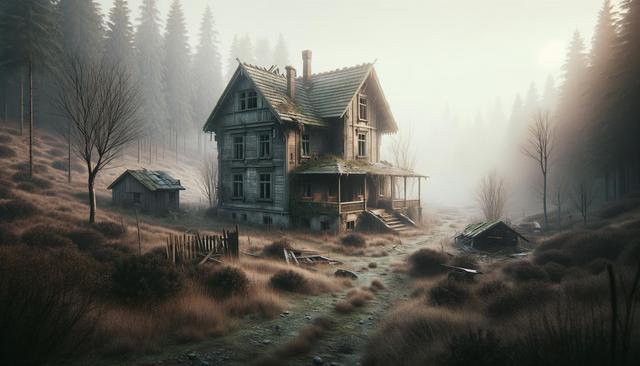The Fate of Abandoned Houses
When a house is left unoccupied for an extended period, it often becomes classified as abandoned. These properties can fall into disrepair quickly, especially if they are not maintained. The reasons behind abandonment vary—some homes are left due to financial hardship, legal disputes, natural disasters, or the death of the owner. Once left unattended, an abandoned house can become a target for vandalism, squatting, or natural decay. Depending on the jurisdiction, abandoned houses may eventually be seized by local governments through processes like eminent domain or tax foreclosure. These homes may then be auctioned or repurposed, but many linger in limbo for years.
In some cases, neighbors or communities attempt to maintain the exterior appearance of these properties to preserve neighborhood value. However, without proper ownership or oversight, such efforts can only go so far. It’s important to understand the legal and logistical implications of dealing with an abandoned home before considering any interaction with it.
Legal and Safety Considerations
Before entering or exploring an abandoned house, it’s critical to be aware of the legal boundaries. Trespassing laws vary by location but generally prohibit entering private property without permission. Even if a house appears deserted, it likely still has a legal owner, and entering without consent could result in legal consequences. Some municipalities post notices on vacant properties, while others may not, making it difficult to determine the legal status at a glance.
Safety is another major concern. Abandoned houses can pose several hazards, including:
- Unstable structures and flooring
- Mold, asbestos, or other health hazards
- Sharp objects or debris
- Presence of animals or pests
- Potential for criminal activity
Due to these risks, it’s highly advisable to conduct any investigation with proper permissions and protective gear, or consult professionals such as urban explorers with experience in dealing with such environments.
Why Some Homes Are Left Abandoned
The reasons behind why homes become abandoned are often complex and rooted in broader societal or personal circumstances. Common causes include:
- Foreclosure due to unpaid mortgages
- Legal issues such as title disputes
- Natural disasters making homes uninhabitable
- Inheritance complications when heirs can’t be located
- Urban migration leading to depopulation in rural areas
In cities experiencing economic downturns, entire neighborhoods may suffer from high vacancy rates. In contrast, in rapidly developing areas, old houses might be left behind due to redevelopment projects. Understanding these dynamics can provide insight into urban planning and housing policy challenges related to abandoned real estate.
Opportunities Hidden in Abandoned Properties
Despite their condition and stigma, abandoned houses can offer unique opportunities for investors, renovators, and history enthusiasts. For those with the resources and patience, restoring an abandoned home can be a rewarding project. Some see it as a chance to preserve local heritage or create affordable housing options. Real estate auctions and tax lien sales are common avenues to acquire such properties at below-market prices.
However, renovation projects should be approached with caution. Buyers should be prepared for:
- Extensive repairs and code compliance
- Securing permits and dealing with bureaucracy
- Unexpected costs such as structural damage or pest infestations
- Time-consuming inspections and legal verifications
Proper due diligence is essential before committing to any purchase. Consulting with local officials, inspectors, and real estate professionals can help ensure a smoother process and reduce the likelihood of costly surprises.
Preserving the History and Stories Within
Abandoned houses often hold rich histories and untold stories. From architectural styles reflecting past eras to personal belongings left behind, these structures can serve as time capsules. Local historians and preservation groups sometimes work to document or restore these homes, especially if they have cultural or architectural significance.
For communities, preserving such houses can foster civic pride and contribute to tourism if the property is of historical interest. However, this is not always feasible, especially when resources are limited. Community-driven initiatives, historical societies, or grant programs occasionally provide the means to save these properties from demolition.
When exploring the narrative behind an abandoned home, ethical considerations are key. It’s important to respect the privacy and dignity of the former occupants and avoid spreading misinformation or sensational stories. Responsible exploration and documentation can contribute positively to understanding local heritage.
Conclusion: Approach with Caution and Curiosity
Abandoned houses are more than just empty structures—they are reflections of economic cycles, personal stories, and shifting urban landscapes. Whether you are driven by curiosity, investment interest, or preservation efforts, it’s essential to approach these properties with both caution and respect. Legal research, safety precautions, and community awareness should guide any interaction with an abandoned home. With the right knowledge and preparation, what seems like a forgotten place may reveal meaningful insights or even a worthwhile opportunity.




Leave a Reply